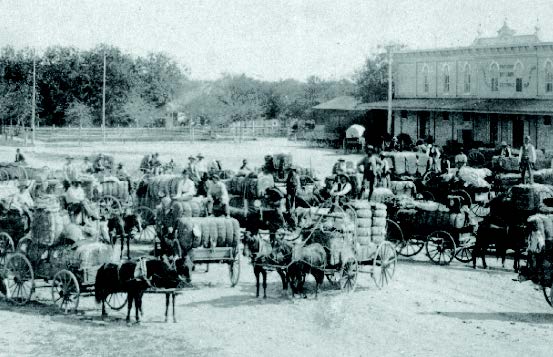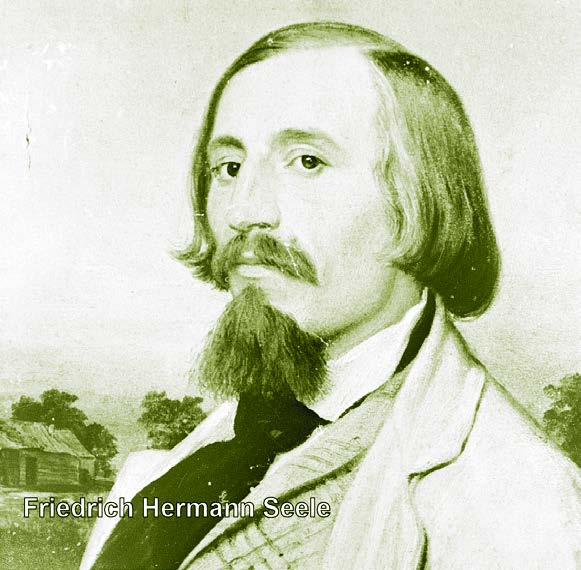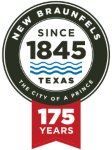CULTURE & HERITAGE (kultur und erbe)
Principles of hard work and celebration of success caused the New Braunfelsers’ work ethic to kick into gear immediately. Nicolaus Zink surveyed and platted the town and farm lots. The downtown streets traveled today are the same widths and layouts as drawn up in 1845. A prized feature is downtown’s distinctly European “Main Plaza,” which has always been the center of trade and celebrations.

Cotton market on Main Plaza, 1890.
“The thought came to me involuntarily upon viewing the city and beautiful fruitful valley from a distance, what an earthly paradise could be created here through the hands of an industrious and cultured population.”
– Dr. Ferdinand von Roemer, 1845

Hermann Seele, teacher, public official, writer, cultural leader – considered “the Soul of New Braunfels,” 1841
Culture and education were important, and within the first few months of settling in New Braunfels, Hermann Seele began teaching classes to 15 suntanned, barefoot children under the shade of an elm tree.

New Braunfels Academy, 1858.
“Where the average frontiersman was illiterate and could barely read and write, the pioneer German settlers of New Braunfels brought with them the best educators and craftsmen, blacksmiths and machinists, European stone architecture, brewers and millers, journalists, weavers, music and saengerfests, brass bands, doctors, teachers, schools and libraries.”
– W.T. Block, article, January 1, 2007

State Firemen’s Convention in front of Seekatz Opera House, 1916.
